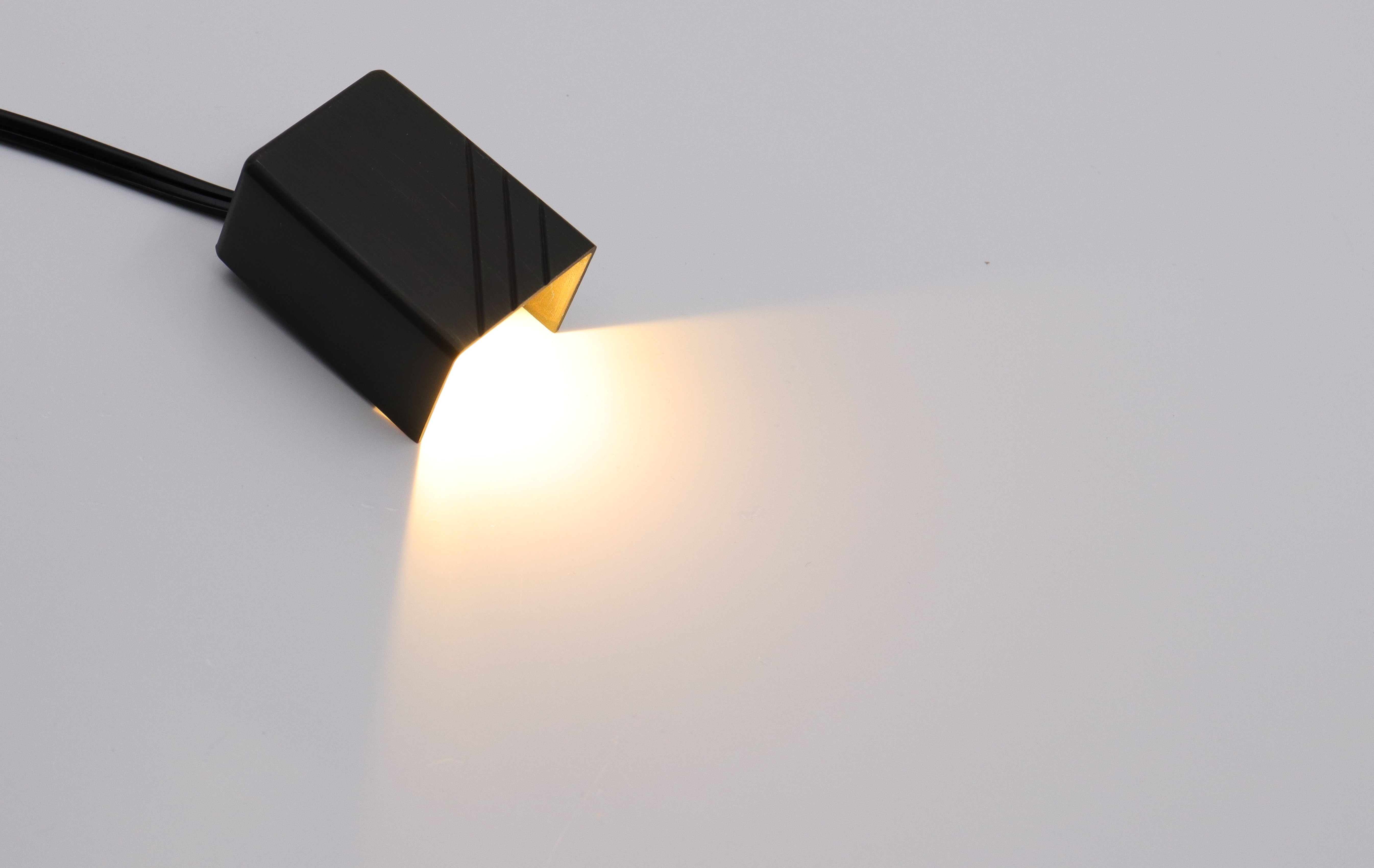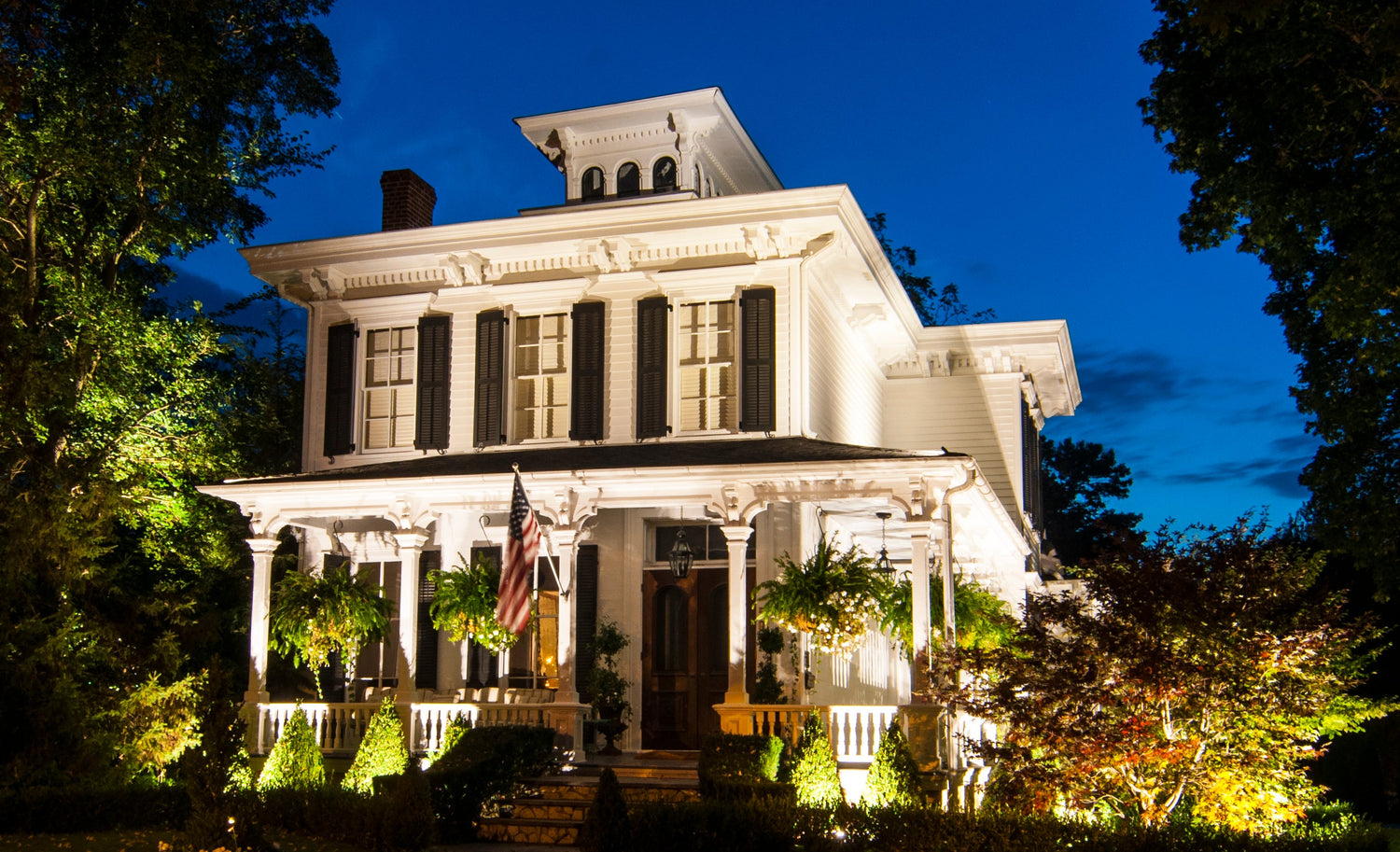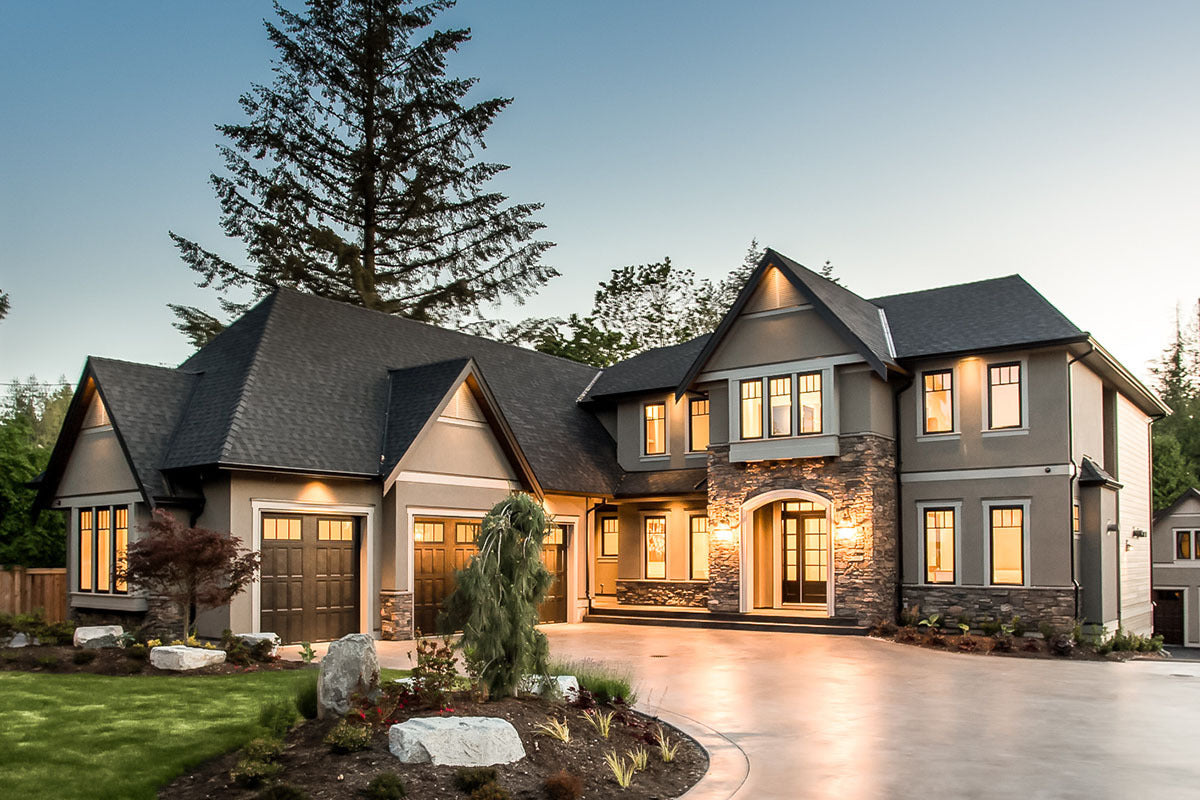If you want to turn your ordinary backyard into a friendly night hangout spot, then mastering hardscape lighting is what you should do. It simply deals with choosing and installing outdoor lights that would provide a beautiful look but also bring safety and functionality to the space after dusk.
In this article, we are going to show you everything from how to choose the perfect fixtures that match your style to tips on how to keep them shining bright for every occasion.

What is Hardscape Lighting?
Hardscape lighting involves shining light on the built parts of your outdoor space—the hard stuff, not plants or dirt. Think concrete walkways, stone benches, brick walls, and wooden decks. Ultimately, it's these features that make up the core of your yard, and being able to light them brings an extra special something to the space.
So, why light up these areas? Well, it's practical for one thing: lights along a pathway mean no more tripping over in the dark when you're taking out the trash or when the dog needs a late-night walk. Still, it is not only about seeing where you are going. The right lighting can make your outdoor space cease being a pitch-black afterthought into an inviting extension of your home.
The small lights nestled into a stone retaining wall can cast a soft glow showcasing the texture of the stone, and your garden takes on a whole new dimension at night. Or take a deck: with some well-placed fixtures under its railing, one has a cozy evening chat spot. It's touches such as these that can make your outdoor space more than just usable but truly special when the sun sets.
A Step-by-Step Guide to Planning Your Hardscape Lighting
When you decide to light up your outdoor space, it's not just about buying a bunch of lights and sticking them in the ground. There's a bit of planning involved to get it right. Here's how to assess your space and figure out what you need for effective hardscape lighting:
- Walk through your yard at night to spot areas that need lighting.
- Illuminate pathways, steps, and slopes for safety.
- Install motion-sensor lights for security in hidden corners.
- Choose warm or cool lights depending on the desired ambiance.
- Combine different light intensities for a balanced effect.
- Position lights to minimize disturbance to neighbors.
1. Identify Dark Spots in Your Yard at Night
Start with a walk-through of your outdoor area at night. Notice the spots that are too dark or could use a little extra light for safety. Think about where you or your guests might walk—like paths, driveways, or around seating areas—and ensure those are going to be well-lit. Also, consider the features you want to highlight, like a water fountain or a sculptural tree.
2. Make Sure Your Lights Keep Everyone Safe and Secure
While planning you must take care of safety. Light up steps, drops, or uneven planes since 'quips and falls' are not uncommon. Come to the question of security, lighting sends a very useful message: it deters uninvited guests. You can install motion sensor-activated lights in the dark nooks intruders can use for hiding.
3. Select Lights for a Cozy Feel or Modern Style
You will also want to take into consideration the look and feel you desire. Lighting sets the mood for your space. Soft, warm lights can make a very inviting and cozy atmosphere. Cooler tones can lean more toward a modern vibe. Use accent lighting to draw attention to landscaping or architectural features that you love, and take into consideration how shadows may play a part in your design.
4. Keep Your Lighting Even and Inviting, Not Overpowering
Too little lighting is not good, but over-lighting is also something to be avoided. Too much light will wash out your space even make and take away its potential charm. Instead, try a balanced layout with a mix of intensities and directions; for example, spotlights on a feature wall with subtle path lighting.
5. Place Lights Thoughtfully to Avoid Bothering the Neighbors
Just keep in mind that any lighting installed should be respectful of your neighbors. Avoid having lights shine into their yards or windows. Directional downward-casting, shielded lights decrease light pollution and keep the light where you want it.
How to Select the Perfect Hardscape Lights
Selecting the right lights for your outdoor space is crucial to achieving the desired effect. Whether you're spotlighting a garden feature or lighting up a walkway, each light type serves a purpose and enhances different aspects of your hardscape.
| Aspect | Consideration | Concise Details |
|---|---|---|
| Location | Pathways | Path lights for safe, subtle illumination. |
| Walls and Structures | Wall lights or sconces for elegance and shadow-play. | |
| Plants and Statues | Spotlights and well lights for feature focus. | |
| Light Color | Warm Areas (2000K-3000K) | Yellowish light for relaxing spaces. |
| Cool Areas (4000K-5000K) | Bluish light for task-oriented areas. | |
| Efficiency & Cost | LED Lighting | Energy-efficient, long-lasting LEDs. |
| Solar-Powered Lights | Self-charging, auto-on at dusk for sunny spots. | |
| Features | Dimmable and Color-Changing | Adjustable brightness and color for versatility. |
| Budget | Affordable Options | Mix premium with cost-effective for balance and functionality. |
Choose Lights That Fit Each Part of Your Yard
For pathways, one could consider lights low to the ground, such as path lights that illuminate downward. This provides better footing without overbearing a certain area. Wall lights, or sconces, tend to add class to any structural element and are absolutely perfect for creating patterns of light and shadow on fences and walls. The spotlights and well lights do the best job of making one notice the plant or statue.
Use Light Colors to Develop the Right Mood
Color temperature determines the mood and atmosphere. The standard unit of color temperature is Kelvin (K). A low temperature provides a warmer, more yellowish light, while a higher temperature emits a cooler, more bluish tone. Warm lights range from 2000K to 3000K, which are the best colors for small, enclosed areas where you will be relaxing. Cool lights in the range of 4000K to 5000K give off a bright, alert atmosphere, and as such, they are best applied in task-oriented areas, such as an outdoor kitchen.
Select Long-Lasting, Low-Cost Lights
First, not only are LED options energy-efficient, but they also have longer lives, LED bulbs can easily achieve over 25,000 hours of use,which implies minimum maintenance on your part. A solar-powered lighting can be a very good option for locations that receive ample sunlight during the daytimes. These lights self-charge and turn on automatically during dusk. These save on electricity bills and are also easy to install.
Get Lights You Can Dim or Change the Color
Some dim, others change color, making them even dimmer or brighter as it befits the occasion or event you hold. That means you can go from 'Party' mode to 'Wind-down-on-a-summer's-evening mode' with just a click of your remote.
Keep Outdoor Lighting Affordable
While one may be tempted to give in to the charm of high-end choices, remember to keep your budget in mind. There are many affordable solutions that don't compromise on quality or style. Sometimes, mixing some of the premium and more affordable lighting together tends to balance each other in creating a functional lighting scheme.

How to Design Your Hardscape Lighting Layout
Designing the layout of your hardscape lighting involves a blend of practicality and aesthetics. It’s about ensuring you have light where you need it, without sacrificing the beauty of your outdoor area. Here’s how to strike that balance and use lighting to enhance your space effectively:
- Begin with basic safety lighting, then layer in accent lights
- Approach outdoor lighting in layers: ambient, task, and accent
- Designate 'rooms' outdoors with specific lighting types
- Choose between warm or cool light for the right mood
- Ensure lighting respects neighbors and environment
- Test light placement with temporary setups first
- Incorporate creative solutions for a standout design
Start with Essential Lights, Then Add Accents
Think of your outdoor lighting as you would indoor: in layers. You have your general lighting, your task, and your accent all working together. For hardscapes, this could be overall ambient lighting from wall washes, focused task lighting for functional areas, and accent lighting highlighting architectural or plant features. The key is to layer these types so no single light source is overwhelming.
Stack Your Lights Like You Would Indoors
Lighting will help denote different 'rooms' in your outdoor space: a spotlight can make a cozy sitting area and a floodlight might open a space up for some lively outdoor games and provide safety and great atmosphere. Bistro lights strung above a table denote a dining area. Consider the purpose of each space: softer lighting invites relaxation, while brighter spots cater to activities that pay attention to detail.
Set the Mood with Warm or Cool Lighting
Ambiance has to do with the feeling created by your lighting. Warm lights are generally condescendingly inviting and relaxing, while cool lights are refreshing to keep a space invigorated. Dimmable LEDs put you in charge of this: with a simple adjustment, you can transition from active engagement to quiet contemplation.
Keep Your Lighting from Disturbing Neighbors or Wildlife
The goal should be to light up your space without having too much glare and spillover into the night sky or your neighbor's yard. Using fixtures with shields or baffles will help direct light down to the ground. Use bulbs with appropriate lumen outputs-bright enough to light up your space but not so bright that they are blinding.
Try Out Your Light Placement Before Making It Permanent
A good hint before finalizing how everything will look is to test it out. Set up temporary stakes and bring in portable lights to simulate the placement of permanent fixtures. This allows you to experience your design in real-time, make adjustments, and really see how the light feels in the space.
Unique Ideas for Hardscape Lighting
1. Change the Color of the Lights to Fit Your Party's Theme
Think color-changing lights for an extra dynamic when entertaining. LED strips under the undersides of benches or stairs can change colors to reflect the mood of your party—a cool, soothing blue, perhaps, or an energizing red. But texture-etched glass fixtures or shades also will cast interesting patterns upon your hardscapes, adding depth and visual interest.
2. Light Up Ponds and Pools for a Nighttime Glow
If you have a pond, pool, or even a fountain in your yard, underwater lighting does something magical: It gives an entirely new dimension to your water features at night. The reflection and movement of light through water add an almost magical touch to the ambiance outside.
3. Accentuate Trees in Order to Highlight Your Lawn's Natural Beauty
If you have trees in your yard, uplights can be installed to showcase their structure and canopy. In fact, any tree can be made to look so majestic at night, featuring strong vertical lines of light that provide height to your outdoors.
4. Use Lights to Design Patterns on Walkways
Take it to the next level beyond simple path lights: make patterns in your walkways with lighting. This can be achieved by adjusting the spacing of lights or by using different styles of lighting fixtures that project designs onto the path.
5. Manage Lights from Your Phone with Smart Tech
Smart outdoor lighting systems can be controlled right from your phone or through voice commands, making it easy to switch on the party lights or dim things down for a quiet nightcap without ever having to leave your seat. Programmable settings let you schedule lights on and off at set times, which is great for security and energy savings.
6. Bring in Movable Lamps for Easy Outdoor Lighting
Lighting isn't always necessary to be fixed. Install some portable, decorative lamps or lanterns throughout your landscape for those nights you may need movable, practical lighting solutions. They can give off soft light in whatever place you will need it, and they can easily be tucked away when not in use.
Start Your Outdoor Hardscape Lights Project
From guiding your friends safely down the path to your door, to setting the scene for late-night chats on the deck, how you light up your yard is the secret ingredient to hosting memorable nights under the stars. Get these lights shining and watch your backyard become the go-to spot for those cool, casual hangouts or big, bashful celebrations. And don't stress; even starting small can spark a big difference, letting you build up to that dreamy glow at your own pace.







Leave a comment
All comments are moderated before being published.
This site is protected by hCaptcha and the hCaptcha Privacy Policy and Terms of Service apply.